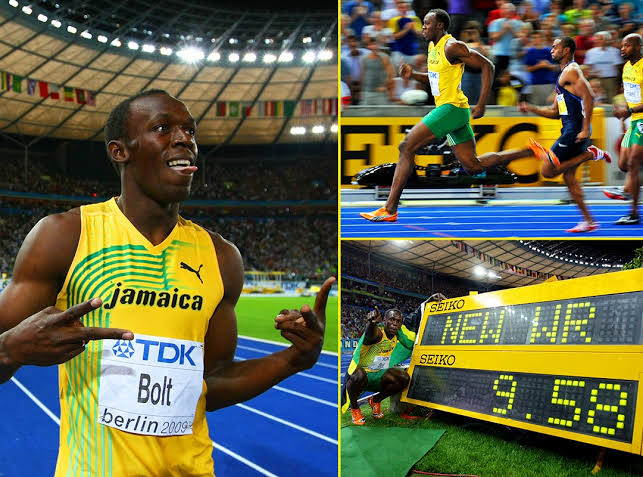
The official world record has stood since Bolt clocked a time of 9.58 seconds at the 2009 IAAF World Championships in Berlin, Germany. Luke Alfred Davies Luke Alfred Davies Usain Bolt’s 100m world record has already been beaten by a rival sprinter – although it never counted.
Bolt, 38, is an eight-time Olympic gold medallist and is the 100 and 200m world record holder having secured both records at the 2009 IAAF World Championships in Berlin, Germany. Almost 16 years on, no man has officially recorded a quicker time. However, another athlete has, in fact, bettered Bolt’s 9.58s time but there’s a catch.
Justin Gatlin was a long-term rival of Bolt and did technically run faster than him in 2011 during an appearance on the Japanese TV show Kasupe! – which you watch below
Gatlin, 43, recorded a timing of 9.45 seconds with the help of wind turbines that generated gusts of up to 25 m/s. In contrast, Bolt set a record while running in winds of +0.9 m/s. Ahead of the 2016 Rio de Janeiro Olympics, the American declared he was “going to win” Olympic gold.
Gatlin said, “I’m going to win,” “The gold medal will be returned to the United States. We will return it to the United States, specifically to New York and Los Angeles. With it around my neck like a gold chain, we are embarking on a national tour.” This was not the case, though, as Bolt won the 100-meter race in 9.81 seconds, over a tenth of a second faster than second-place finisher Gatlin, who finished in 09.89 seconds. At the IAAF World Championships in London, England, a year later in 2017, Gatlin defeated the Jamaican, who came in third, with an American mark of 9.92 seconds.
Although it would be a tough ask, a controversial potential rule change could aid sprinters in their pursuit of Bolt’s world records.As reported by The Telegraph, a laboratory near Cambridge believes the impossible could be achieved if ‘smart’ tracks are allowed to be used with suggestions that sensors can ‘provide a raft of real-time data that would be transformative to athletes, coaches, fans and media, but early testing has pointed to an energy return that is some 20 per cent greater than existing tracks
Be the first to comment